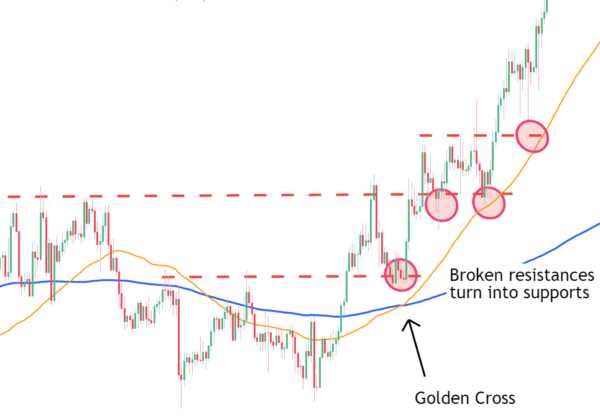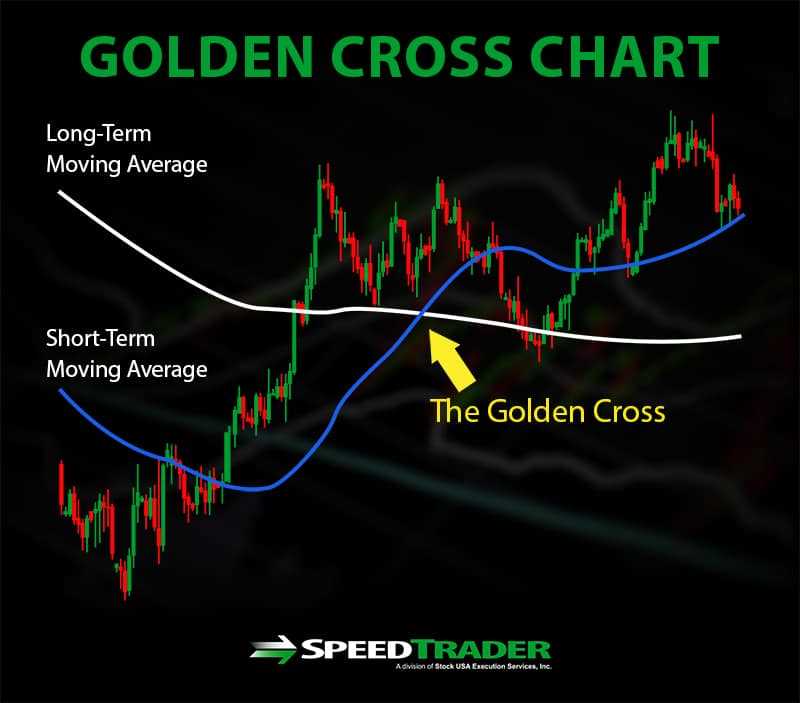Examples of the Golden Cross Pattern

The Golden Cross pattern is a popular technical analysis tool used by traders to identify potential bullish trends in the market. It is formed when the shorter-term moving average crosses above the longer-term moving average. This crossover is seen as a bullish signal, indicating that the price of an asset is likely to continue rising.
Let’s take a look at a few examples of the Golden Cross pattern:
Example 1:
Stock: XYZ
Timeframe: Daily
Moving Averages: 50-day and 200-day
Example 2:
Timeframe: Weekly
Moving Averages: 50-week and 200-week
Example 3:
Forex Pair: EUR/USD
Timeframe: 4-hour
Moving Averages: 50-period and 200-period
These examples illustrate how the Golden Cross pattern can be used across different markets and timeframes. It is important to note that this pattern should not be used in isolation and should be confirmed by other technical indicators and analysis.
Traders should also be aware that the Golden Cross pattern is not infallible and can sometimes result in false signals. Therefore, it is crucial to use proper risk management techniques and consider other factors before making trading decisions based solely on this pattern.
Analyzing the Golden Cross Pattern with Charts

The Golden Cross pattern is a popular technical analysis tool used by traders to identify potential bullish trends in the market. It is formed when a shorter-term moving average crosses above a longer-term moving average, indicating a shift in momentum and a potential buy signal.
To analyze the Golden Cross pattern, traders often use charts to visually identify the crossover and assess its significance. Here are some steps to follow when analyzing the Golden Cross pattern:
- Identify the moving averages: The first step is to identify the specific moving averages that are being used in the Golden Cross pattern. Typically, traders use the 50-day and 200-day moving averages, but other combinations can also be used.
- Plot the moving averages on a chart: Once the moving averages are identified, plot them on a chart to visualize their crossover. The shorter-term moving average is usually plotted in a different color or line style to distinguish it from the longer-term moving average.
- Observe the crossover: Look for the point where the shorter-term moving average crosses above the longer-term moving average. This is the Golden Cross signal and indicates a potential bullish trend reversal.
- Confirm the signal: While the Golden Cross pattern is considered a strong buy signal, it is always recommended to confirm the signal with other technical indicators or chart patterns. Look for additional bullish signals such as increasing volume or positive momentum indicators.
- Consider the timeframe: It is important to consider the timeframe in which the Golden Cross pattern is occurring. A Golden Cross on a daily chart may have a different significance than on a weekly or monthly chart. Traders should analyze the pattern in the context of the overall market trend.
- Manage risk: Like any other trading strategy, it is important to manage risk when trading the Golden Cross pattern. Set stop-loss orders to limit potential losses and consider the risk-reward ratio before entering a trade.

Emily Bibb simplifies finance through bestselling books and articles, bridging complex concepts for everyday understanding. Engaging audiences via social media, she shares insights for financial success. Active in seminars and philanthropy, Bibb aims to create a more financially informed society, driven by her passion for empowering others.
